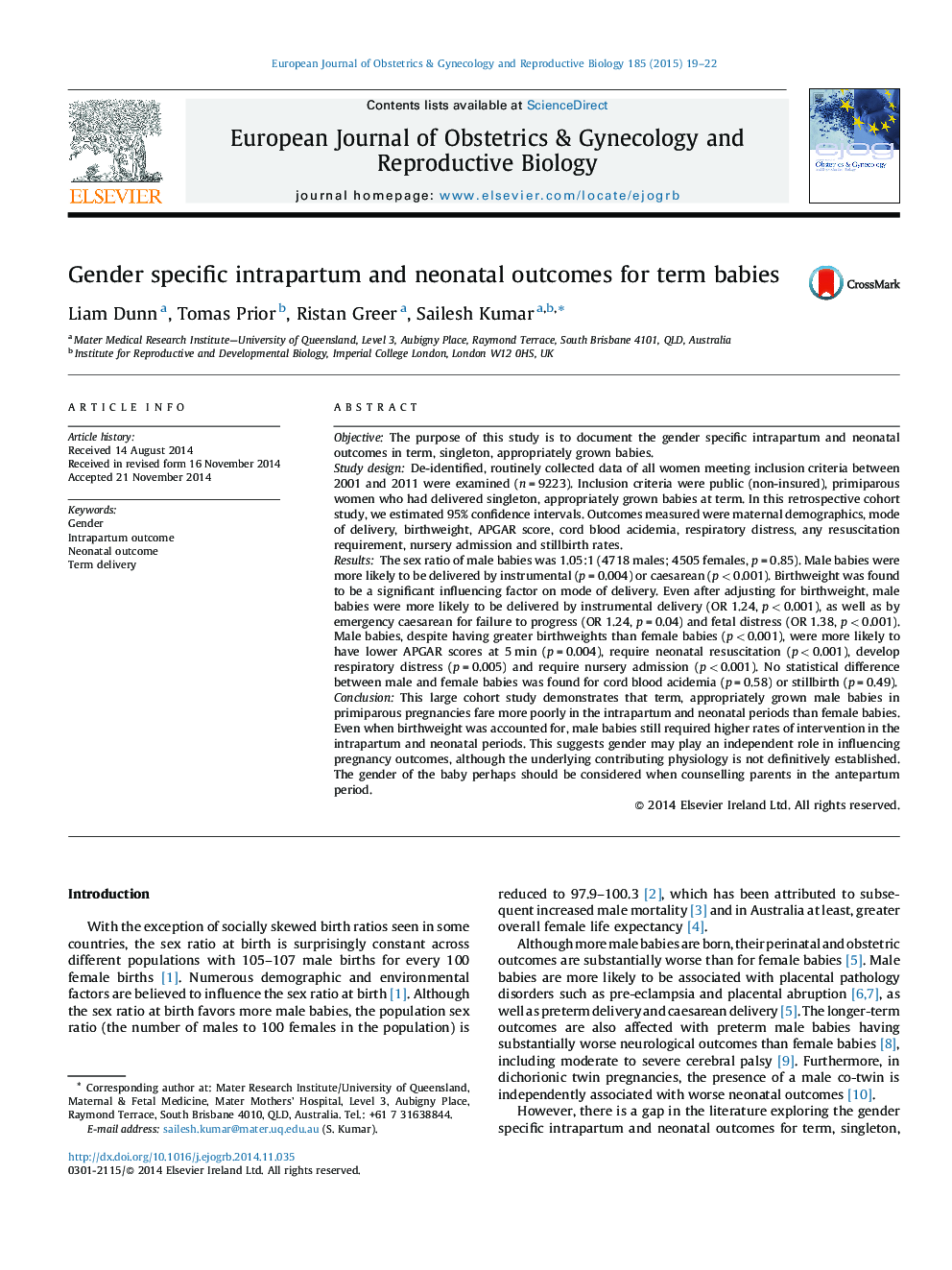| کد مقاله | کد نشریه | سال انتشار | مقاله انگلیسی | نسخه تمام متن |
|---|---|---|---|---|
| 3919687 | 1599796 | 2015 | 4 صفحه PDF | دانلود رایگان |
ObjectiveThe purpose of this study is to document the gender specific intrapartum and neonatal outcomes in term, singleton, appropriately grown babies.Study designDe-identified, routinely collected data of all women meeting inclusion criteria between 2001 and 2011 were examined (n = 9223). Inclusion criteria were public (non-insured), primiparous women who had delivered singleton, appropriately grown babies at term. In this retrospective cohort study, we estimated 95% confidence intervals. Outcomes measured were maternal demographics, mode of delivery, birthweight, APGAR score, cord blood acidemia, respiratory distress, any resuscitation requirement, nursery admission and stillbirth rates.ResultsThe sex ratio of male babies was 1.05:1 (4718 males; 4505 females, p = 0.85). Male babies were more likely to be delivered by instrumental (p = 0.004) or caesarean (p < 0.001). Birthweight was found to be a significant influencing factor on mode of delivery. Even after adjusting for birthweight, male babies were more likely to be delivered by instrumental delivery (OR 1.24, p < 0.001), as well as by emergency caesarean for failure to progress (OR 1.24, p = 0.04) and fetal distress (OR 1.38, p < 0.001). Male babies, despite having greater birthweights than female babies (p < 0.001), were more likely to have lower APGAR scores at 5 min (p = 0.004), require neonatal resuscitation (p < 0.001), develop respiratory distress (p = 0.005) and require nursery admission (p < 0.001). No statistical difference between male and female babies was found for cord blood acidemia (p = 0.58) or stillbirth (p = 0.49).ConclusionThis large cohort study demonstrates that term, appropriately grown male babies in primiparous pregnancies fare more poorly in the intrapartum and neonatal periods than female babies. Even when birthweight was accounted for, male babies still required higher rates of intervention in the intrapartum and neonatal periods. This suggests gender may play an independent role in influencing pregnancy outcomes, although the underlying contributing physiology is not definitively established. The gender of the baby perhaps should be considered when counselling parents in the antepartum period.
Journal: European Journal of Obstetrics & Gynecology and Reproductive Biology - Volume 185, February 2015, Pages 19–22
